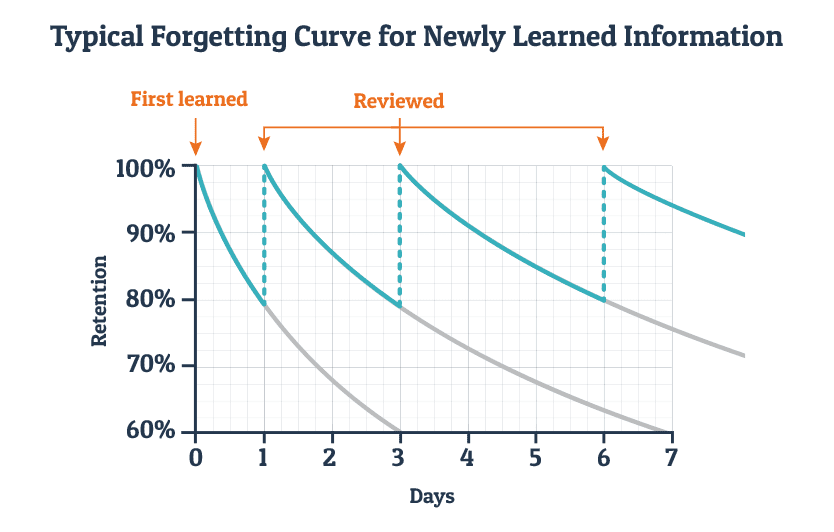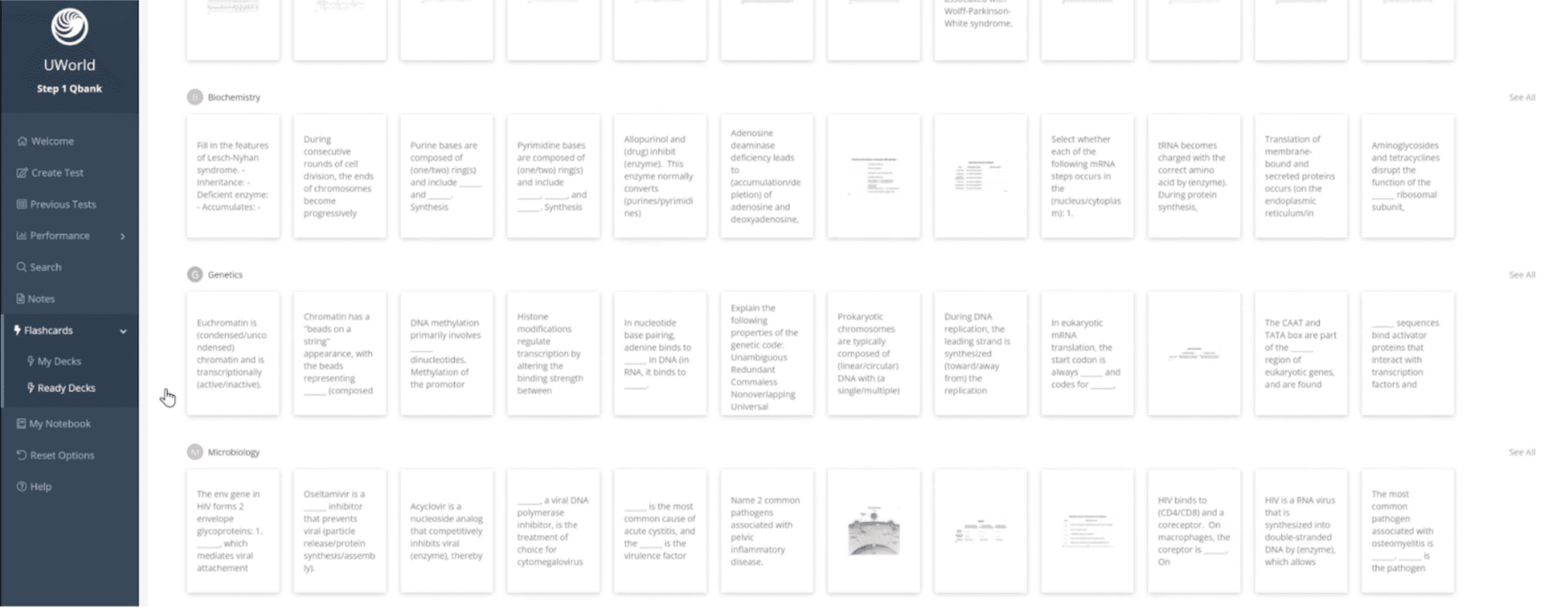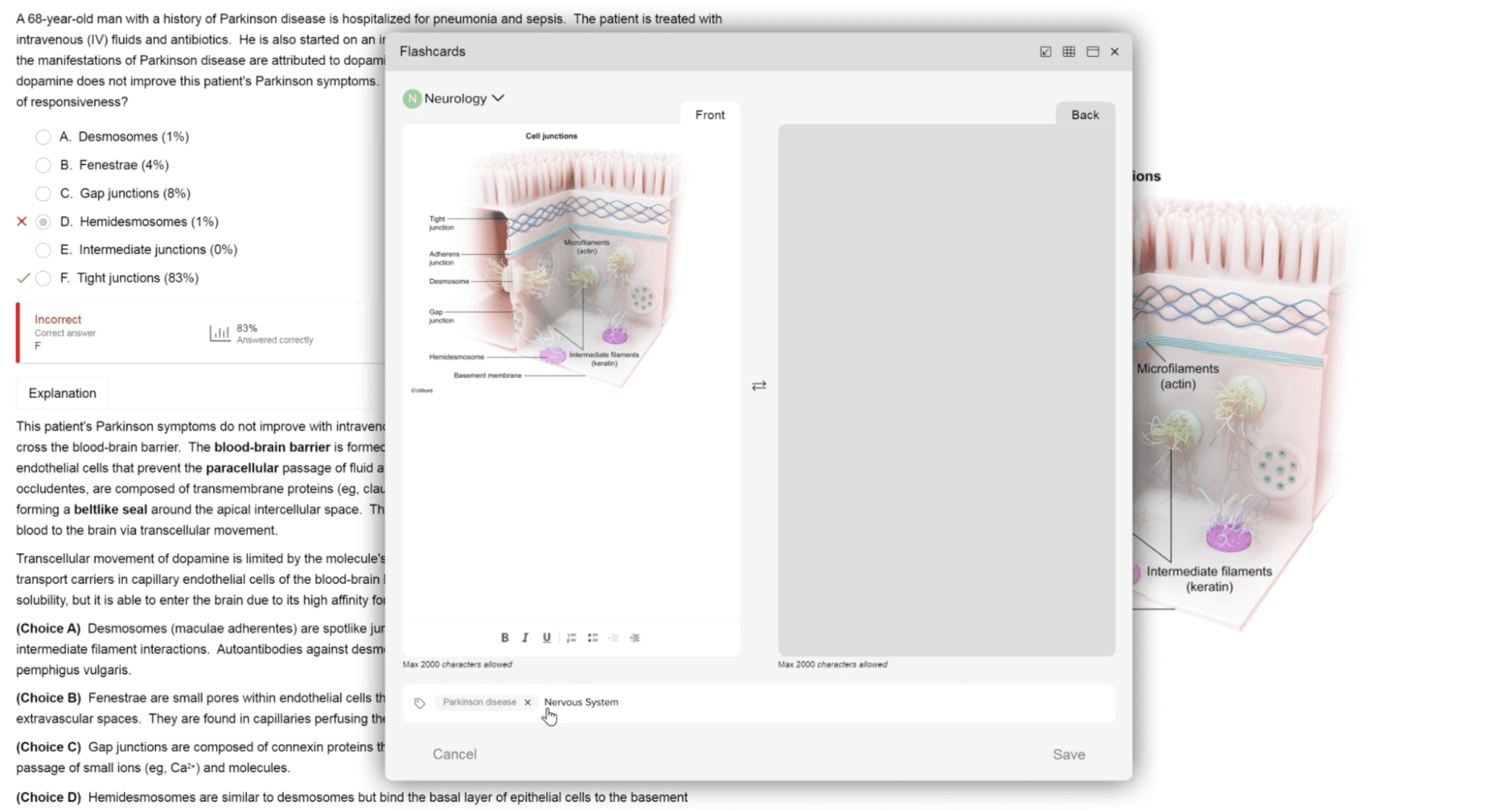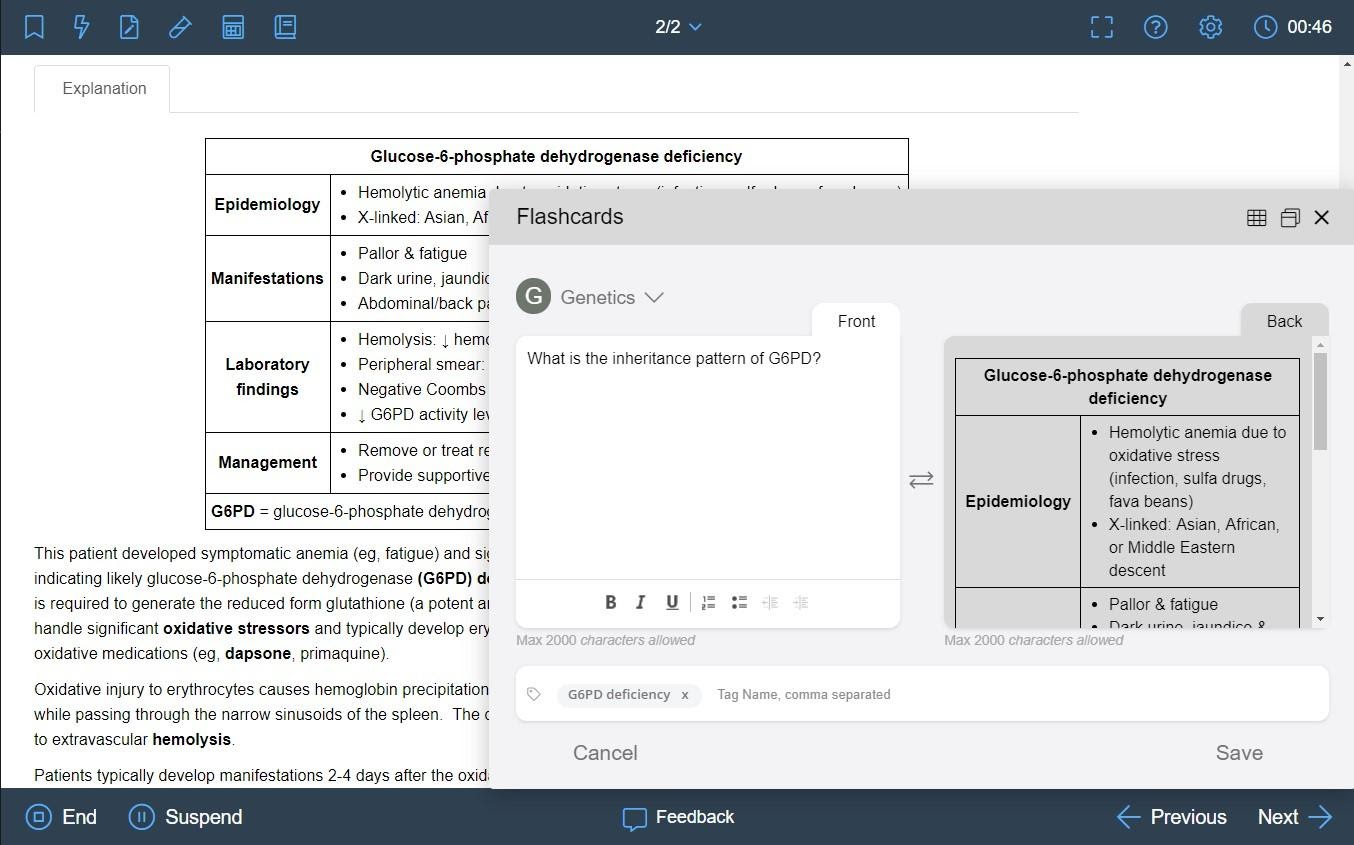2025 Guide to Creating High-Yield Flashcard Decks on UWorld

12968 Views
This blog was originally published in September 2023, and updated on June 2nd, 2025 by Rebecca Lapides, MD Candidate.
Did you know that flashcards have been around since at least the 1800’s when paper became widely available to the average student? Certainly, the use of flashcards to aid in the memorization of facts is no foreign concept to any of us. In fact, I think most people remember writing out flashcards throughout their educational career (Or do they? Perhaps I am showing my age!) to memorize things like foreign languages and historical facts. Over the last 30-40 years, however, researchers have begun taking a closer look at the effectiveness of flashcards. Through this research, the important concepts of “active learning” and “spaced repetition” were born.
As you may have guessed, especially in medical school while studying for the USMLE exams, utilizing flashcards as strategy for active learning and spaced repetition are major contributing factors to studying success. Creating your own personalized flashcards provides a custom study resource tailored to your specific knowledge base and needs. When leveraged appropriately, flashcards can become your most valuable review resource that puts the icing on your hard-earned USMLE study cake! As luck may have it, the popular USMLE QBank UWorld offers the ability to make flashcards right on their platform which is what we will be exploring in this post. So, grab a fork and let’s talk UWorld flashcards!
Why Flashcards Work for the USMLE Exams
To start, active learning, for those who may not be familiar, refers to any learning activity in which the student participates or interacts with the learning process (as opposed to passively taking in information). This means using as many of your senses as possible when you’re learning new material: writing, speaking, listening, reading, highlighting, summarizing, etc. This is why taking the time to create personalized flashcards is so important. Making your own flashcards instead of simply using a premade deck creates a learning activity that causes you to interact with the material you are trying to memorize and increases your retention rate.
The second reason making flashcards is so helpful deals with the concept of spaced repetition. This concept relies on reviewing flashcards at increasing intervals based on the difficulty of the card. This concept of spaced repetition has overtaken medical education as the best way to retain all the information needed to do well on the USMLE Step Exams. Essentially, taking the time to repetitively review flashcards over the course of a period of time lifts the “forgetting curve” so that students actually remember the information they have reviewed. And using algorithms that place your flashcards at intervals based on how quickly you answered them and how easy/difficult they were for you is a game changer in customizing your studying by creating a personalized spaced repetition schedule that is customized for you.
Flashcards Meet Medical School
Medical students worldwide have become hooked on spaced repetition flashcards. This was facilitated by the release of the Anki app in 2006 (Anki is the Japanese word for “memorization”). Over the past decade, Anki has swept through medical schools as one of the best methods of implementing spaced repetition. Anki’s popularity has largely been attributed to the fact that it is free to use, user friendly, and there are many pre-made high-quality flashcard decks available specifically for USMLE Step 1 and Step 2 that students can easily download and begin studying with. Students also have the flexibility to create their own cards and decks by importing pictures and charts as necessary.
Anki is often used in tandem with First Aid and the UWorld question bank (QBank) to make flashcard sets based on the material being reviewed in each resource. However, UWorld launched its own Flashcards feature a few years ago, making flashcard creation easier than ever before. Since then, many students have opted to use the UWorld platform to create and review their flashcards. UWorld now offers both ReadyDecks and SmartCards for students. ReadyDecks are pre-made flashcards created by practicing physicians that focus on high-yield test concepts and include tables, charts, and images. SmartCards are flashcards that students can create and customize themselves. ReadyDecks are available as a tab in the sidebar of your UWorld dashboard that you can access at any time, sorted by system:
SmartCards are created by easily highlighting the text and/or image that you want to use and then pasting directly into your flashcards that you create:
UWorld’s Flashcards Features
Benefits of Having Flashcards Integrated Directly within the UWorld QBank
UWorld flashcards have several unique features that make them particularly well suited to USMLE Step 1 and Step 2 prep. First and foremost, the flashcard feature utilizes spaced repetition systems, which, again, has been proven as the most effective way to recall and retain information. You can even customize features like setting your own easy interval, number of new cards per day, and order that the cards are shown to you in. Secondly, the flashcard feature is completely integrated within the UWorld question bank, which makes creating flashcards very simple and less time-consuming than having to switch between platforms. Take the following example:
Whenever you come across a classic presentation, a high-yield concept, or a key piece of knowledge you want to review, you can just click the Flashcards pop-up window and add that content to a new or existing card in your deck. Of course, you can also copy and paste any written or visual content onto your card!
For students who use flashcards primarily to reinforce material from incorrect answers (detailed explanations), the UWorld Flashcards feature allows you to add proprietary UWorld images, tables, and charts featured in UWorld explanations to your flashcards. Given the high-quality images, tables, and charts featured within the UWorld explanations, directly incorporating that content into flashcards is highly beneficial.
As seen in the above screen captures, students can easily create flashcards incorporating helpful images. Sometimes tables can be worth 1000 words. Having the ability to drop one into a flashcard and not worry about finding it later can not only save you time but facilitate the highest quality of studying!
Ease of Use and Keeping Organized
UWorld flashcards are very user-friendly. Having the ability to quickly and easily browse, organize, and study flashcards is a huge timesaver when studying for the USMLE Step 1 and Step 2 CK exams. The newest features of UWorld’s flashcard function include “browse” and “enhanced filtering.” These features help organize and edit your decks by subject/organ, ect. This functionality will help to:
- keep you organized
- identify which subjects you may be struggling with most and identify themes to guide your review
- pair down your deck by moving out subjects you’ve mastered to longer review intervals
- easily group and review related organ systems for multi-system integration critical for higher level understanding!
Integrated Spaced Repetition
Speaking of reviewing your flashcards, a favorite benefit of using UWorld’s flashcards is the integrated spaced repetition feature. Adjust card review frequency based on performance using the integrated space repetition feature, targeting specific areas of strength or weakness. For cards you feel like you’ve nailed, I recommend students adjust settings to see that card less often by decreasing the frequency. On the flipside, you can also increase a card’s frequency that you are struggling to remember. Always remember this is your study experience and your deck should include the most high-yield facts for you! On this point, I also recommend that in order to maximize your study efficiency, you create custom study sessions. Choose how many cards, order, and frequency for spaced repetition. Then, after you’re done reviewing for the day, remember to check out your metrics to assess progress!
With all these benefits, the best way to use the UWorld flashcard feature is undoubtedly as a way to memorize and retain content from UWorld questions. Granted, making your own flashcards is time-consuming. However, the benefits of making your own cards tailored to the material you got wrong are astronomical, particularly if you start making cards early. We recommend starting during your first pass of UWorld in your first or second year of medical school. Consistently using spaced repetition flashcards is a key active learning strategy for acquiring and retaining high-yield USMLE facts. This will help ensure you’re not overwhelmed on test day. If Anki is still a go-to for you, you can still use it in tandem with UWorld! Students may benefit from Anki’s pre-made decks, QBanks, First Aid, and board-review resources like Boards and Beyond, Sketchy, and Pathoma!
Reaping the Benefits
Combining daily flashcard review with UWorld creates a highly effective study combo for USMLE exams. Regardless of what flashcard platform students use, the important thing to remember is that spaced repetition only works if you are dedicated to it, and keep up with your cards. Unfortunately, our memory doesn’t take a “vacation.” So, if you take extended time off, you will be digging yourself out of that hole for a long time. The good news is that you don’t have to dedicate hours each day to flashcards. Most students find that they can get through their deck during downtime throughout the day. This includes commuting, breaks between clinical duties, or stepping away from learning content through doing questions or video resources. Likewise, it takes time to get really good at making effective flashcards. So the earlier you start, the better! Good luck studying!
[Originally guest published on the UWorld Blog]
Featured Articles








